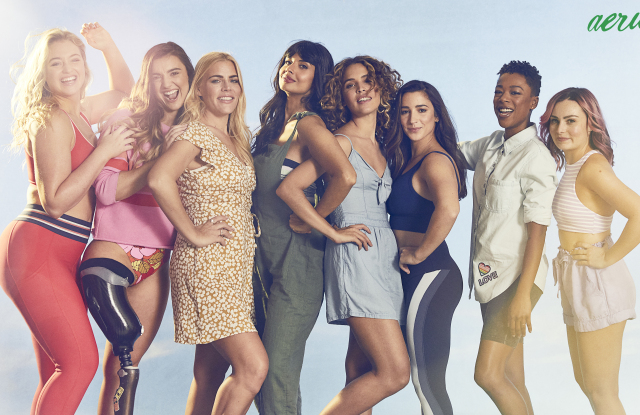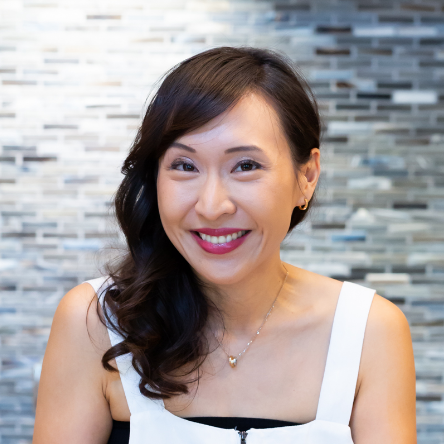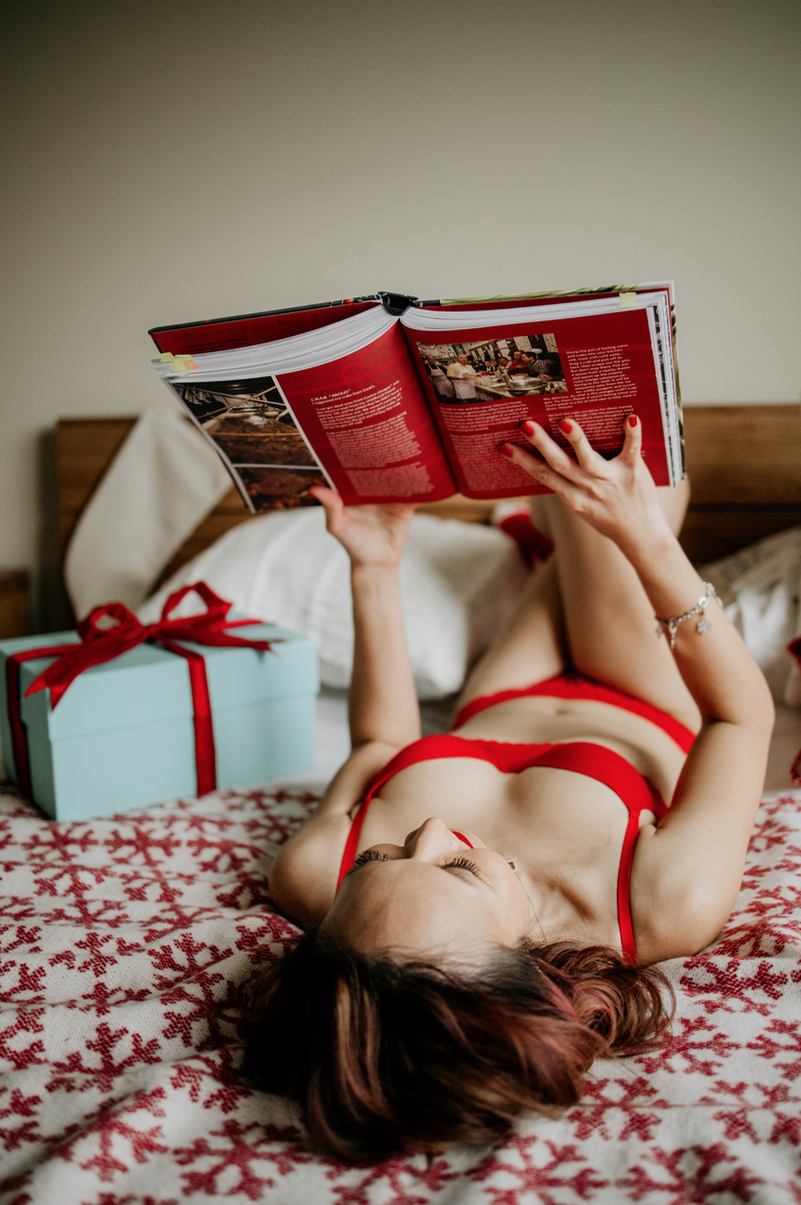Food and Lingerie: Bringing Us Together All Over the World
Typically, when people think about chefs, they think of a macho man with tattoos on both arms—the stereotypical chef featured in food-related magazines. I am a female chef, and my look and tastes are extremely feminine. But since my uniform is a chef's coat, which isn't all that girlie, underneath it all I wear beautiful underwear. You may wonder what's the connection between women's lingerie and food. The answer is, both food and women's lingerie can make people feel included and excluded.

Let me explain.
The mission of my business is to get people to connect with each other through food. Food can be the best icebreaker. Every time I go to a party and introduce myself as a chef to a new group of friends, there is never a silent moment. Some people have one or two recipes they have difficulty perfecting. Some people get the impulse to share photos of their latest dish. When I volunteered at my children's school, decorating cupcakes with their classmates, so many kids came up to hug me, shake my hand, and tell me, "please come back again!" I'm certainly more popular than the parents who are doctors, lawyers, or engineers.
Food brings people together—it makes us feel included and part of a community.
Cooking food connects us. People all of the world cook—it's something we all have in common. But do the foods we prepare bring us together or set us apart? At first glance, cuisine from different regions of the globe set people apart. Breakfast in England might look different than breakfast in Japan. After teaching cooking classes for years; however, I started to see the similarities amongst the cuisines. Take pancakes, for example. Here in the US, a sweet pancake topped with maple syrup, butter, fresh fruits, whip cream, and powdered sugar can be a wonderful Sunday brunch indulgence. In China, people eat scallion pancakes. In Japan, the most popular pancake is Okonomiyaki, a savory pancake with a variety of ingredients thrown in—such as cabbage, Benito flakes, rice flour, and pork belly. (If you are interested in making Okonomiyaki, please read my blog post: OKONOMIYAKI (お好み焼き) – QUICK AND EASY JAPANESE PANCAKE FOR AMERICAN HOME COOK.) In Korea, the Kimchi seafood pancake is absolutely divine. In Thailand, Pang Jee is a mini banana pancake made of rice flour, banana, egg, shredded coconut and served with condensed milk. It's a popular street food perfect for snacking all day. Not just for breakfast, the Pang Jee is one of my favorite desserts to nibble in the afternoon! I can go on and on, but you may already get my point. If you want to find out more about how people around the world create and enjoy food in a similar way, I highly recommend Chris Ying's book You and I Eat the Same: On the Countless Ways Food and Cooking Connect Us to One Another.
Even though we might come from different regions all over the world, each with their own seemingly unique cuisines, when we take a closer look, we discover many similarities. If we can agree on the hypothesis "you and I eat the same," can you agree on the hypothesis "you and I wear the same"? We choose underwear made from different materials. We have different brands. Different designs. We have a variety of styles to choose from. And what connects us all is that we all wear them. You might like white, cotton, bikini cut underwear, and she might like a black lacy thong—but it's all underwear just the same.
Underwear, like food, gives us a sense of inclusion. As women, we all remember going to a lingerie store for the first time and trying our first bras. That was a symbolic moment for us to know we are not young girls anymore. Every shopper should be comfortable, welcome and included in a lingerie shop. But some people just don't get it. Last year, Ed Razek, the CEO of Victoria's Secret, was asked why the company never included transgender or plus-size models in their ad campaigns. Razek said that trans and plus-size women do not exemplify the "fantasy" that Victoria's Secret is trying to sell. This explains why I never feel comfortable walking by the humongous window displays in Victoria's Secret. Those models are unapproachable and unreachable. They are a reminder of an "ideal" body type and an impossible standard of beauty that is not a reality. And, those photos seem to please men more than women. Why should I spend a single penny on a brand that makes me feel worthless and undesirable—a brand that does not include me?
After Ed Razek's disrespectful comments on trans and plus-size women, people were enraged. He expressed his apology via Twitter, but his apology was far from sincere, and it made me even angrier! "My remark regarding the inclusion of transgender models in the Victoria's Secret Fashion Show came across as insensitive," he said in a statement, failing to acknowledge what he said about plus-size models. "I apologize. To be clear, we would absolutely cast a transgender model for the show." He added, "We've had transgender models come to castings… And like many others, they didn't make it… But it was never about gender. I admire and respect their journey to embrace who they really are."

I ditched Victoria's Secrets underwear because of their inability to include everyone. Underwear, like food, should connect us all, right?
American Eagle's Aerie is my favorite because of its body-positive ad campaigns using "real" women. Aerie famously doesn't Photoshop any of the images in its ads. In 2014, it swapped its airbrushed ads for unretouched photos and launched a campaign known as #AerieReal.
Aerie builds its platform on inclusion and acceptance. When I am in one of their stores, I see photos of models that look like any of us—women of different body types, color skin, hair color—all having fun and enjoying life. These ads are very different than the ones at Victoria's Secret with models posing seductively in the black and white. The Aeire ads make me feel included, warm, and welcome.

When I created my brand Cooking Beautiful Lee, I had a vision it would be not only about food but also about a lifestyle of connection and inclusion. I have clients from different ethnic and religious backgrounds and different lifestyle preferences. Some are on strict Kosher diets. Some embrace a healthy lifestyle and only want to cook protein and high fiber meals. Some love guilty pleasures—a diet full of butter, steak, Foie gras, donuts, and cupcakes with triple frosting. (Just a side note: I myself don't think anyone should feel guilty having those kinds of pleasure!) Some have severe food allergies. I never judge anyone based on their preference for food. Just like plus-size and transgender models should be included in ad campaigns, individuals who have a special diet or follow a specific ritual to cook should feel included and welcomed.
Join Our Community at Patreon
Perks for Friends of Food Patrons only:
Friends of Food is a digital members-only community designed to empower and connect food folks alike.
- Invitation to private community & food folk directory
- Access to a highly vetted network of Chefs
- One hour Zoom cooking lesson once a month
- Cookbook club + happy hour once a month
- 30 mins cooking consultation
- E-mail us your cooking questions and we will get back to you with our best answer within a week.
- Shoutout
- Polls (Help us choose a topic for an upcoming video + more!)
- Behind-the-scenes / Bloopers
- Exclusive perks from brand partners

Melissa Lee
Chief Entertainment Officer
Melissa is 100% MIT (Made in Taiwan), where she worked as a food writer. She’s also worked alongside renowned chefs like Ming Tsai and Joanne Chang, honing her craft and gathering stories along the way. Part story-teller, part educator, and part food lover, Melissa brings a special blend of experience, skill, and enthusiasm to her work. She blends her Asian background, her new home of New England, and love of food and culture to bring joy, optimism, and inspiration to food lovers and fun-seekers everywhere.
What sparked your passion for the industry?
The desire to make things by hand. The joy of sharing delicious, hearty food with students. The opportunity for people to get connected via cooking and baking. When a child smiled broadly and told me it’s the best scone he has ever made and eaten, it really made my day!
In your opinion, what’s the most important course?
Well, I usually take a peek at the wine list first. I like tapas style, so the course doesn’t really matter. Cheese and charcuterie are always a good place to start. And since I’m a pastry chef, there is always room for dessert!
Bill Gates is picking up your tab, where would you go?
Noma, Copenhagen.

